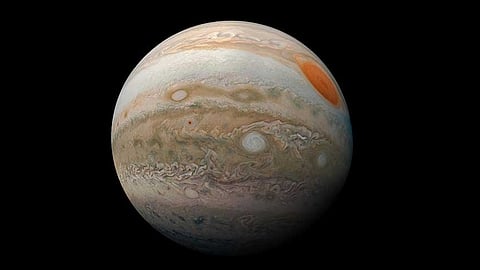
Juno, a United States’ National Aeronautics and Space Administration spacecraft sent to study Jupiter, the largest planet in our Solar System, is now set to end its mission in September 2025, when it will finally be pulled into the planet’s atmosphere and destroyed.
It was launched in 2011 and arrived at Jupiter in July 2016, after a five-year journey covering 1.7 billion miles. Since then, it has endured the giant planet’s intense radiation and revealed its atmosphere, weather systems and moons in unprecedented detail. Originally designed for 33 orbits, Juno far outlived its expected lifespan.
The spacecraft orbits the planet in long, looping paths that take it very close to the cloud tops and then far out beyond Jupiter’s radiation belts. This unusual orbit helps protect the spacecraft’s instruments from the planet’s extreme radiation.
Like its namesake from Roman mythology, Juno has been able to pierce Jupiter’s veil of clouds, exposing its true nature. The spacecraft has transformed our understanding of Jupiter’s atmosphere and interior, reshaping ideas about how giant planets — and the Solar System itself — formed. Its on-board camera, JunoCam, has also captured images that have captivated the public, with raw data processed by citizen scientists around the world.